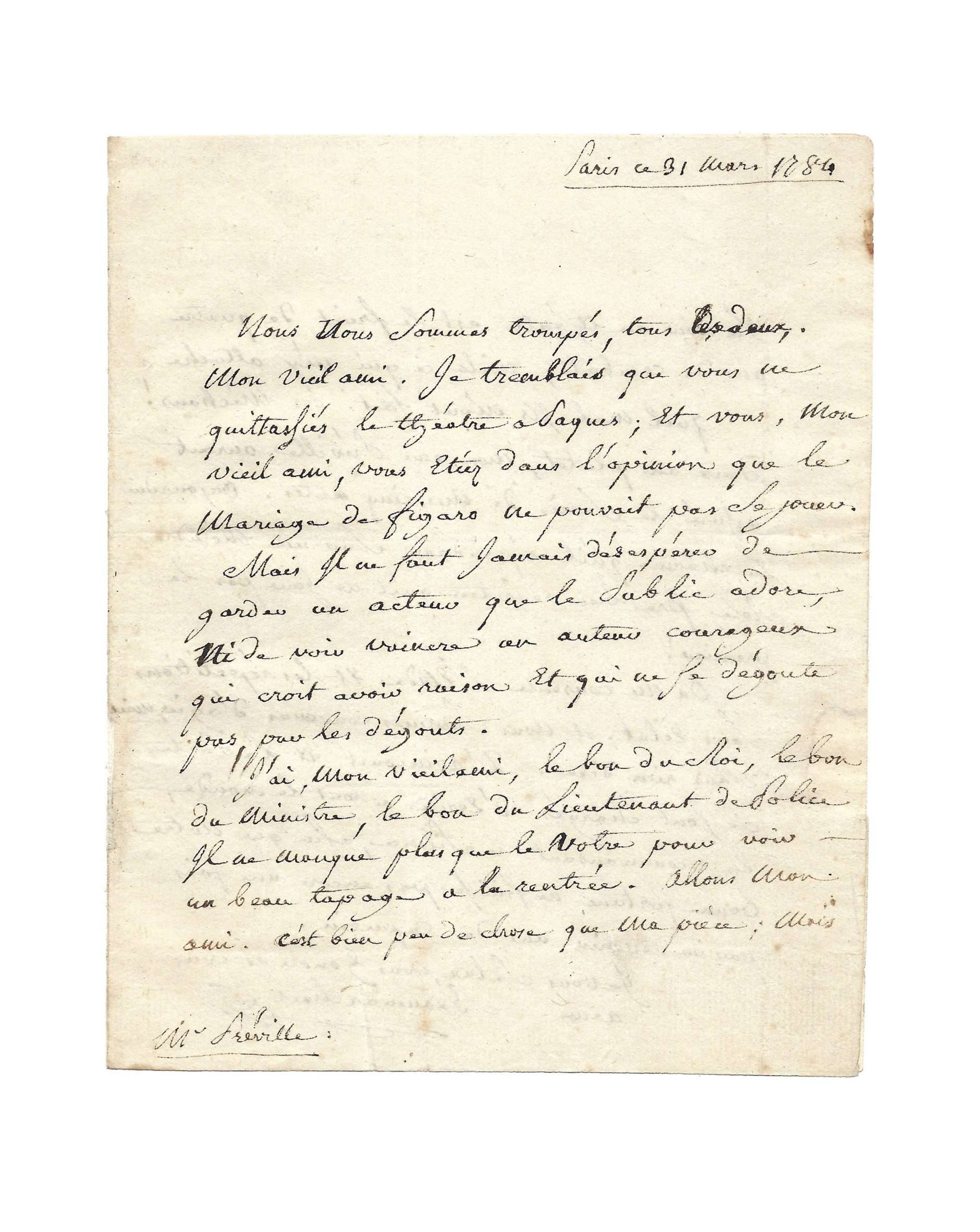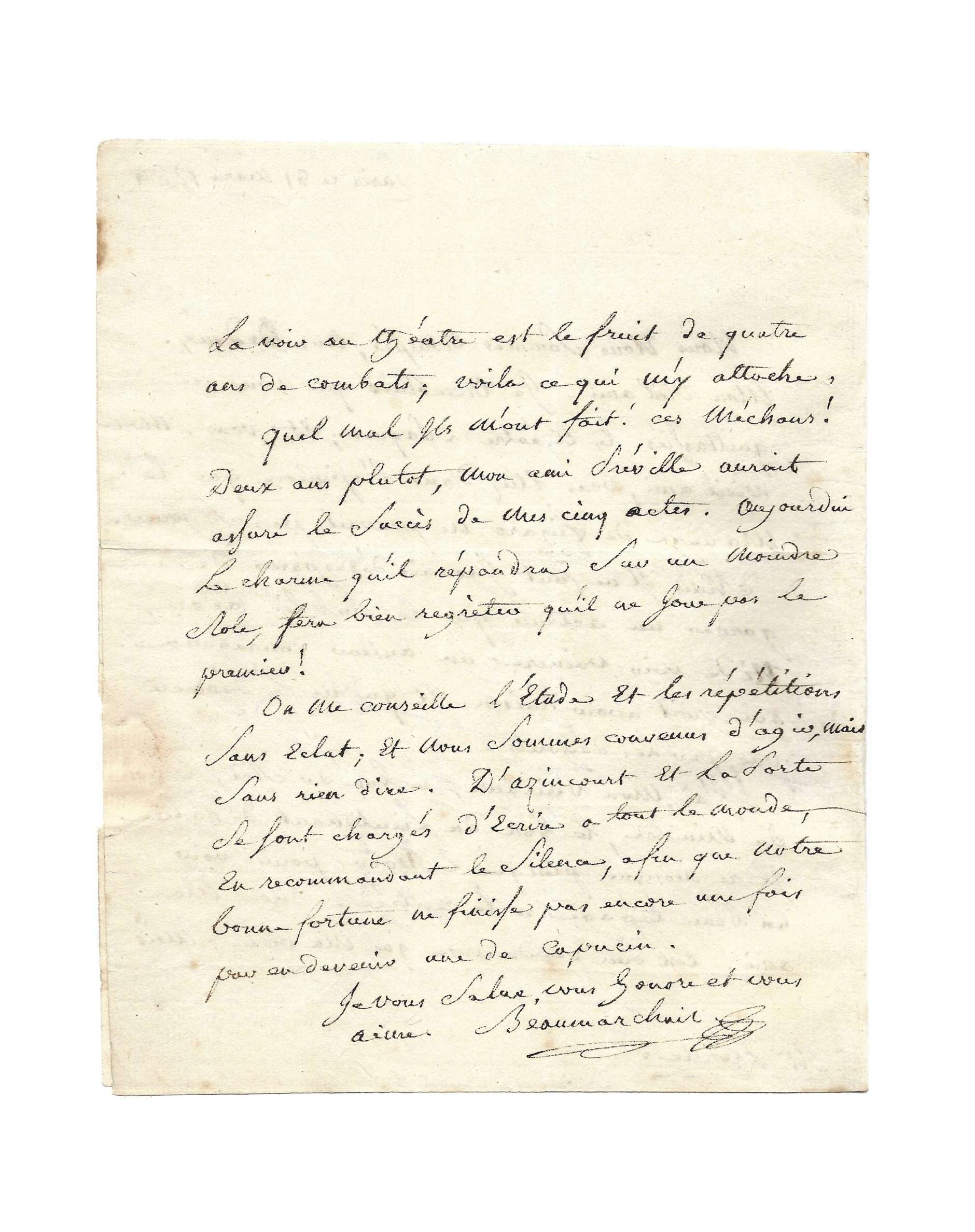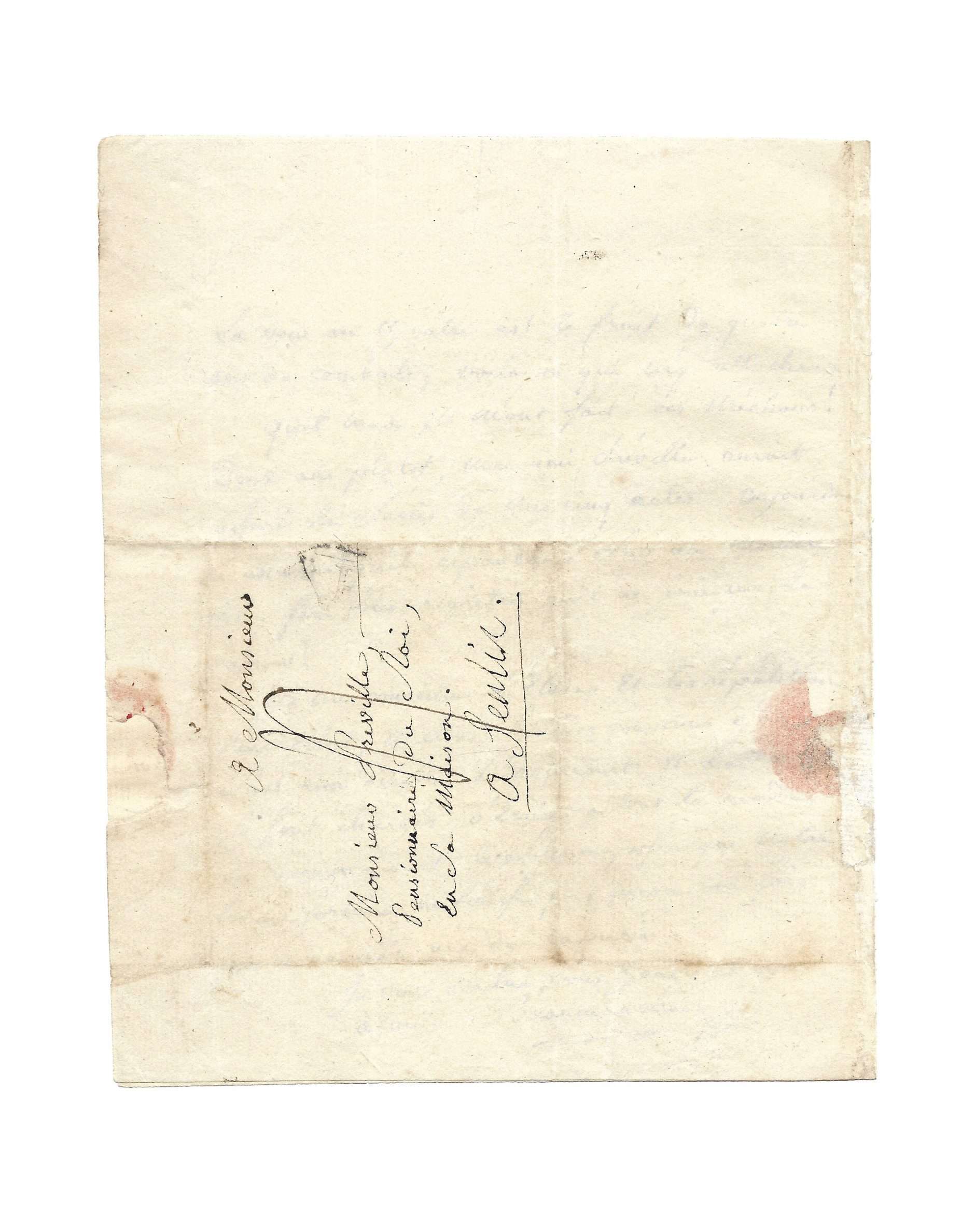BEAUMARCHAIS (de), Pierre-Augustin Caron (1732-1799)
Autograph letter signed « Beaumarchais » to comedian Préville
Paris, 31st March 1784, 2 pp. on bi-folio in-8°,watermarked laid paper
« My play isn’t a big thing ; but seeing it in the theater is the result of four years of fighting »
Fact sheet
BEAUMARCHAIS (de), Pierre-Augustin Caron (1732-1799)
Autograph letter signed « Beaumarchais » to comedian Préville
Paris, 31st March 1784, 2 pp. in-8°, watermarked laid paper
Autograph address on fourth page, some corrections
Spots and tiny browning, fold mark, missing bit on second folio (broken seal) without affecting the text
Very scarce letter from Beaumarchais entirely about to The Marriage of Figaro, written less than a month before the first official performance
From the Raphaël Esmerian collection
« Paris ce 31 Mars 1784
Nous nous sommes trompés tous les deux, mon vieil ami. Je tremblais que vous ne quittassiez le théâtre à Pâques ; et vous, mon vieil ami, vous étiez dans l’opinion que le Mariage de Figaro ne pouvait pas se jouer.
Mais il ne faut jamais désespérer de garder un acteur que le public adore ni de voir vaincre un auteur courageux qui croit avoir raison et qui ne se dégoûte pas par les dégoûts.
J’ai, mon vieil ami, le bon du Roi, le bon du Ministre, le bon du lieutenant de Police. Il ne manque plus que le vôtre pour voir un beau tapage à la rentrée. Allons mon ami. C’est bien peu de chose que ma pièce ; mais la voir au théâtre est le fruit de quatre ans de combats ; voilà ce qui m’y attache.
Quel mal ils m’ont fait ces méchants ! Deux ans plus tôt, mon ami Préville aurait assuré le succès de mes cinq actes. Aujourd’hui le charme qu’il répandra sur un moindre rôle fera bien regretter qu’il ne joue pas le premier !
On me conseille l’étude et les répétitions sans éclat ; et nous sommes convenus d’agir, mais sans rien dire. D’azincourt et La Porte se sont chargés d’écrire à tout le monde, en recommandant le silence, afin que notre bonne fortune ne finisse pas encore une fois par en devenir une de capucin.
Je vous salue, vous honore et vous aime.
Beaumarchais »
The Marriage of Figaro is a comedy in five acts by Beaumarchais written in 1778, read at the Comédie-Française in 1781, performed privately in 1783, but which official public performance did not take place until April 27, 1784 at the Théâtre François (now the Théâtre de l’Odéon), barely a month after our letter.
« My play isn’t a big thing ; but seeing it in the theater is the result of four years of fighting »
For years, the play was censored. Louis XVI described it as “execrable, which plays with all that is respectable” and assures that “the representation could only be an unfortunate inconsistency, unless the Bastille was destroyed”.
In March 1784, it was the positive opinion of the sixth censor, Bret, which was endorsed by a “court of decency and taste”, presided over by baron de Breteuil. The premiere of The Marriage of Figaro at the Comédie-Française, on 27 April 1784, was a triumph, confirmed by the sixty-seven performances that followed the same year.
The genesis of a popular rumble that prefigures the Revolution of 1789
A masterpiece of French and universal theatre, the play is considered one of the harbingers of the French Revolution. Indeed, it openly denounces the privileges of the nobility and the clergy, the unequal society and the venal justice of the Ancien Régime.
The climax of this political and social satire is the famous monologue of Figaro (Act V, scene 3), a piece of bravery attacking the established order. Moreover, this pre-revolutionary manifesto is then the longest monologue of the French theater.
Two years after its first performance, the play was adapted into an opera by Mozart under the title Le nozze di Figaro.
Préville (1721-1799), Beaumarchais’ favorite actor, had already been given the title role by Beaumarchais for his play The Barber of Seville in 1775. Aging at the time of the first official performance of The Marriage of Figaro, he finally embodies Brid’oison, secondary character, to leave the role of Figaro to Dazincourt (1747-1809).
One of the most important letters of Beaumarchais’ correspondence
Provenance:
Bibliothèque Raphael Esmerian [troisième partie], Paris – Palais Galliera, 6 juin 1973, n°5
Private collection
Librairie Rossignol
Collection P.E.R.
Bibliography:
Beaumarchais et son temps, t. II, éd. Louis de Loménie, Michel Lévy Frères, 1856, p. 324





